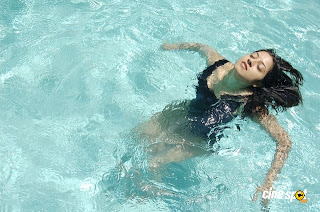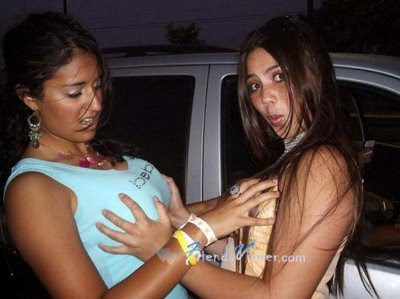breast and indian boobs
>> Sunday, 15 May 2011
South India is major part of India and most of hot Indian aunties belongs to this area. South India is the area encompassing India’s states of Andhra Pradesh, Karnataka, Kerala, and Tamil Nadu as well as the union territories of Lakshadweep and Puducherry, occupying 19.31% of India’s area. The region is also known as Dravida as is used in the National anthem.
South Indian aunties or Tamil Aunties having charm in their body and most of Indian guys likes them. It have been observed many times, South Indian actress and women search keywords are being more popular and majority of Indian traffic is tend to it. Yes it is true Tamil aunties are really hot and sexy and their photos create hot feelings in every man who know how much these aunties are hot and joy full.
Breast
From Wikipedia, the free encyclopedia
This article is about the human breast. For other animals, see Udder and Mammary gland.
"Boobs" redirects here. For other uses, see Boob (disambiguation).
For other uses, see Breast (disambiguation).
| Breast | |
|---|---|
| The breast of a pregnant woman | |
| Latin | mamma (cf. mammal from Latin mammalis "of the breast"[1]) |
| Artery | internal thoracic artery |
| Vein | internal thoracic vein |
The breast is the upper ventral region of the torso of a primate, in left and right sides, which in a female contains the mammary gland that secretes milk used to feed infants. Both men and women develop breasts from the same embryological tissues. However, at puberty, female sex hormones, mainly estrogen, promote breast development which does not occur in men due to the higher level of testosterone. As a result, women's breasts become far more prominent than those of men.
Contents[hide] |
Etymology
Breast comes from Old English Brēost meaning "breast, bosom; mind, thought, disposition," from Proto-Germanic Breustam "Breast" (Formed through etymological reconstruction), from the Proto-Indo-European base Bhreus- meaning "To swell, sprout" (Reconstructed through etymological reconstruction).[2] The spelling conforms to the Scottish and northern English dialectal pronunciation.[3]
Anatomy
Anatomically, breasts are modified sudoriferous (sweat) glands which produce milk in women, and in some rare cases, in men.[4] Each breast has one nipplesurrounded by the areola. The color of the areola varies from pink to dark brown and has several sebaceous glands. In women, the larger mammary glandswithin the breast produce the milk. They are distributed throughout the breast, with two-thirds of the tissue found within 30 mm of the base of the nipple.[5]These are drained to the nipple by between 4 and 18 lactiferous ducts, where each duct has its own opening. The network formed by these ducts is complex, like the tangled roots of a tree. It is not always arranged radially, and branches close to the nipple. The ducts near the nipple do not act as milk reservoirs; Ramsay et al. have shown that conventionally described lactiferous sinuses do not, in fact, exist. Instead, most milk is actually in the back of the breast, and when suckling occurs, the smooth muscles of the gland push more milk forward.
The remainder of the breast is composed of connective tissue (collagen and elastin), adipose tissue (fat), and Cooper's ligaments. The ratio of glands to adipose tissues rises from 1:1 in nonlactating women to 2:1 in lactating women.[5]
The breasts sit over the pectoralis major muscle and usually extend from the level of the 2nd rib to the level of the 6th rib anteriorly. The superior lateral quadrant of the breast extends diagonally upwards towards the axillae and is known as the tail of Spence. A thin layer of mammary tissue extends from theclavicle above to the seventh or eighth ribs below and from the midline to the edge of the latissimus dorsi posteriorly. (For further explanation, see anatomical terms of location.)
The arterial blood supply to the breasts is derived from the internal thoracic artery (formerly called the internal mammary artery), lateral thoracic artery,thoracoacromial artery, and posterior intercostal arteries. The venous drainage of the breast is mainly to the axillary vein, but there is some drainage to theinternal thoracic vein and the intercostal veins. Both sexes have a large concentration of blood vessels and nerves in their nipples. The nipples of both women and men can become erect in response to sexual stimuli,[6] to touch, and to cold.
The breast is innervated by the anterior and lateral cutaneous branches of the fourth through sixth intercostal nerves. The nipple is supplied by the T4dermatome.
Lymphatic drainage
About 75% of lymph from the breast travels to the ipsilateral axillary lymph nodes. The rest travels to parasternal nodes, to the other breast, or abdominal lymph nodes. The axillary nodes include the pectoral, subscapular, and humeral groups of lymph nodes. These drain to the central axillary lymph nodes, then to the apical axillary lymph nodes. The lymphatic drainage of the breasts is particularly relevant to oncology, since breast cancer is a common cancer and cancer cells can break away from a tumourand spread to other parts of the body through the lymph system by metastasis.
Shape and support
Breasts vary in size, density, shape, sag and position on a woman's chest, and their external appearance is not predictive of their internal anatomy or lactation potential. The natural shape of a woman's breasts is primarily dependent on the support provided by the Cooper's ligaments and the underlying chest on which they rest (the base). Cooper's ligaments, also known as the suspensory ligaments of Cooper, suspend the breasts from the clavicle and the clavi-pectoral fascia. As their fibers run around and through the breast, these ligaments support the breasts in its position on the chest wall and maintain their normal shape. The breast is also attached at its base to the chest wall by the deep fascia over the pectoral muscles. In a small number of women, the frontal ducts (ampullae) in the breasts are not flush with the surrounding breast tissue, which causes the sinus area to visibly bulge outward.
Some breasts are high and rounded, and protrude almost horizontally from the chest wall. Such high breasts are common for girls and women in early stages of development. The protruding or high breasts are anchored to the chest at the base, and the weight is distributed evenly over the area of the base of the approximately dome- or cone-shaped breasts.
In the “low” breast, a proportion of the breasts' weight is actually supported by the chest against which the lower breast surface comes to rest, as well as the deep anchorage at the base. The weight is thus distributed over a larger area, which has the effect of reducing the strain. In both males and females, thethoracic cavity slopes progressively outwards from the thoracic inlet (at the top of the breastbone) above to the lowest ribs which mark its lower boundary, allowing it to support the breasts.
The inframammary fold (or line, or crease) is an anatomic structure created by adherence between elements in the skin and underlying connective tissue[7]and represents the inferior extent of breast anatomy. Some teenagers may develop breasts whose skin comes into contact with the chest below the fold at an early age, and some women may never develop such breasts; both situations are perfectly normal. The relationship of the nipple position to the fold is described as ptosis, a term also applied to other body parts and which refers in general to drooping or sagging. Due to breast weight and relaxation of support structures, the nipple-areola complex and breast tissue may eventually hang below the fold, and in some cases the breasts may extend as far as, or even beyond, the navel. The length from the nipple to the sternal notch (central, upper border) in the youthful breast averages 21 cm and is a common anthropometric figure used to assess both breast symmetry and ptosis. Lengthening of both this measurement and the distance between the nipple and the fold are both characteristic of advancing grades of ptosis.
The end of the breast, which includes the nipple, may either be flat (a 180° angle) or angled (angles lower than 180°). Breast ends are rarely angled sharper than 60°. Angling of the end of the breast is caused in part by the ligaments that suspend it, such that the breast ends often have a more obtuse angle when a woman is lying on her back. Breasts exist in a range of ratios between length and base diameter, usually ranging from ½ to 1.
Development
In both men and women, there is prenatal development where the basic structure of the breasts is formed.
Girls substantially develop breasts during puberty, as a result of changing sex hormones, chiefly estrogen, which also has been demonstrated to cause the development of woman-like, enlarged breasts in men, a condition called gynecomastia. The onset of this secondary (postnatal) breast development is calledthelarche. In all other animals, breast development happens during the female's first pregnancy, rather than during puberty.[8]
In most cases, the breasts fold down over the chest wall during Tanner stage development.[9] It is typical for a woman's breasts to be unequal in size particularly while the breasts are developing. Statistically it is slightly more common for the left breast to be the larger.[10] In rare cases, the breasts may be significantly different in size, or one breast may fail to develop entirely.
A large number of medical conditions are known to cause abnormal development of the breasts during puberty. Virginal breast hypertrophy is a condition which involves excessive growth of the breasts, and in some cases the continued growth beyond the usual pubescent age. Breast hypoplasia is a condition where one or both breasts fail to develop.
Changes
As breasts are mostly composed of adipose tissue, their size can change over time. This occurs for a number of reasons, most obviously when a girl grows during puberty and when a woman becomes pregnant. The breast size may also change if she gains (or loses) weight for any other reason. Any rapid increase in size of the breasts can result in the appearance of stretchmarks.
It is typical for a number of other changes to occur during pregnancy: in addition to becoming larger, the breasts generally become firmer, mainly due tohypertrophy of the mammary gland in response to the hormone prolactin. The size of the nipples may increase noticeably and their pigmentation may become darker. These changes may continue during breastfeeding. The breasts generally revert to approximately their previous size after pregnancy, although there may be some increased sagging and stretchmarks.
The size of a woman's breasts may fluctuate during the menstrual cycle, particularly with premenstrual water retention. An increase in breast size is a common side effect of use of the combined oral contraceptive pill.
Breasts sag if the ligaments become elongated, a natural process that can occur over time and is also influenced by the breast bouncing while exercising (see Sports bra). Breasts can decrease in size at menopause if estrogen levels decline.
Function
Breastfeeding
Main article: Breastfeeding
The primary function of mammary glands is to nurture young by producing breast milk. The production of milk is called lactation. (While the mammary glands that produce milk are present in the male, they normally remain undeveloped.) The orb-like shape of breasts may help limit heat loss, as a fairly high temperature is required for the production of milk. Alternatively, one theory states that the shape of the human breast evolved in order to prevent infants from suffocating while feeding.[11] Since human infants have a small jaw (not protruding, like other primates), the infant's nose might be blocked if the mother's chest was too flat.[11]According to this theory, as the human jaw receded, the breasts became larger to compensate.[11]
Milk production unrelated to pregnancy can also occur. This condition, called galactorrhea, may be an adverse effect of some medicinal drugs (such as some antipsychotic medications), extreme physical stress or endocrine disorders. If it occurs in men it is called male lactation, and is often classified as a pathological symptom due to its strong correlation to pituitary disorders. Newborn babies are often capable of lactation because they receive the hormones prolactin and oxytocinvia the mother's bloodstream, filtered through the placenta. This neonatal liquid is known colloquially as witch's milk.
Other suggested functions
Zoologists point out that no female mammal other than the human has breasts of comparable size, relative to the rest of the body, when not lactating and that humans are the only primate that has permanently protuberant breasts.
Some zoologists (notably Desmond Morris) believe that the shape of female breasts evolved as a frontal counterpart to that of the buttocks, the reason being that while other primates mate in the rear-entry position, humans, because of their upright posture, are more likely to successfully copulate by mating face to face, the so-calledmissionary position. Morris suggested in 1967 that a secondary sexual characteristic on a woman's chest would have encouraged this in more primitive incarnations of the human race, and a face-on encounter may have helped found a relationship between partners beyond merely a sexual one.[12] However, this theory has since been generally disregarded due to the discovery that other primates, such as orangutans, routinely mate in the face-to-face position even though the females do not have prominent breasts.
The female gelada monkey in estrus presents swollen breasts to signal her reproductive status to the males.
History
In European pre-historic societies, sculptures of female figures with pronounced or highly exaggerated breasts were common. A typical example is the so-called Venus of Willendorf, one of many Paleolithic Venus figurines with ample hips and bosom. Artifacts such as bowls, rock carvings and sacred statues with breasts have been recorded from 15,000 BC up to late antiquity all across Europe, North Africa and the Middle East. Many female deities representing love and fertility were associated with breasts and breast milk. Figures of the Phoenician goddess Astarte were represented as pillars studded with breasts.Isis, an Egyptian goddess who represented, among many other things, ideal motherhood, was often portrayed as suckling pharaohs, thereby confirming their divine status as rulers. Even certain male deities representing regeneration and fertility were occasionally depicted with breast-like appendices, such as the river god Hapy who was considered to be responsible for the annual overflowing of the Nile. Female breasts were also prominent in the Minoan civilization in the form of the famous Snake Goddess statuettes. In Ancient Greece there were several cults worshipping the "Kourotrophos", the suckling mother, represented by goddesses such as Gaia, Hera and Artemis. The worship of deities symbolized by the female breast in Greece became less common during the first millennium. The popular adoration of female goddesses decreased significantly during the rise of the Greek city states, a legacy which was passed on to the later Roman empire.[13]
During the middle of the first millennium BC, Greek culture experienced a gradual change in the perception of female breasts. Women in art were covered in clothing from the neck down, including female goddesses like Athena, the patron of Athens who represented heroic endeavor. There were exceptions:Aphrodite, the goddess of love, was more frequently portrayed fully nude, though in postures that were intended to portray shyness or modesty, a portrayal that has been compared to modern pin ups by historian Marilyn Yalom.[14] Although nude men were depicted standing upright, most depictions of female nudity in Greek art occurred "usually with drapery near at hand and with a forward-bending, self-protecting posture".[15] A popular legend at the time was of the Amazons, a tribe of fierce female warriors who socialized with men only for procreation and even removed one breast to become better warriors (the idea being that the right breast would interfere with the operation of a bow and arrow). The legend was a popular motif in art during Greek and Roman antiquity and served as an antithetical cautionary tale.
The breast as an anthropomorphic geographic feature
Main article: Breast shaped hill
There are mountains or mountain formations in the world named after the human female breast. Mostly they are so named because of their shape and for being connected with local ancestral veneration of the breast as a symbol of fertility and well-being. In Asia there was a mountain, known as "Breast Mountain" with a cave in which Buddhist monk Bodhidharma (Da Mo) spent a long time in meditation.[16] Other mountains where the central theme of the name is the human female breast are: Mount Elgon on the Uganda-Kenya border, Beinn Chìochan in Scotland, the "Bundok ng Susong Dalaga" (Maiden's breast mountains) in Talim Island, Philippines, the twin hills known as the Paps of Anu (Dá Chích Anann or the breasts of Anu), near Killarney in Ireland, the 2,086 m high Tetica de Bacares or "La Tetica" in the Sierra de Los Filabres, Spain, and Khao Nom Sao in Thailand, Cerro Las Tetas in Puerto Rico and theBreasts of Aphrodite in Mykonos, among many others.
Cultural aspects
Symbolism
In Christian iconography, some works of art depict women with their breasts in their hands or on a platter, signifying that they died as a martyr by having their breasts severed; one example of this is Saint Agatha of Sicily. In Silappatikaram, Kannagi tears off her left breast and flings it on Madurai, cursing it, causing a devastating fire.
Sexual aspects
See also: Mammary intercourse and Breast fetishism
In some cultures breasts play a role in human sexual activity. Breasts and especially the nipple are one of a woman's erogenous zones. They are sensitive to the touch as they have many nerve endings; and it is common to press or massage them with hands or orally before or during sexual activity. Some women can achieve breast orgasms. In the ancient Indian work the Kama Sutra, light scratching of the breasts with nails and biting with teeth are considered erotic.[17] On sexual arousal breast size increases, venous patterns across the breasts become more visible, and nipples harden. Compared to other primates, human breasts are proportionately large throughout adult females' lives. Some writers have suggested that they may have evolved as a visual signal of sexual maturity and fertility.[18]
Many people regard the female human body, of which breasts are an important aspect, to be aesthetically pleasing, as well as erotic. Research conducted at the Victoria University of Wellingtonshowed that breasts are often the first thing men look at, and for a longer time than other body parts. [19] The writers of the study had initially speculated that the reason for this is due to endocrinologywith larger breasts indicating higher levels of estrogen and a sign of greater fertility,[19][20] but the researchers said that "Men may be looking more often at the breasts because they are simply aesthetically pleasing, regardless of the size."[19]
Many people regard bare female breasts to be erotic, and they can elicit heightened sexual desires in some men in some cultures. Some people show a sexual interest in female breasts distinct from that of the person, which may be regarded as a breast fetish.[21]
Clothing
Since the breasts are flexible, their shape may be affected by clothing, and foundation garments in particular. A brassiere (bra) may be worn to give additional support and to alter the shape of the breasts. There is some debate over whether such support is desirable. A long term clinical study showed that women with large breasts can suffer myalgia, or shoulder pain as a result of bra straps,[22] although a well fitting bra should support most of the breasts' weight with proper sized cups and back band rather than on the shoulders.
The social norm of most cultures is for breasts to be covered in public, though the extent of expected coverage varies with context. Some religions afford the breast a special status, either in formal teachings or in symbolism. Islam forbids public exposure of the female breasts.[23] Many cultures associate breasts primarily with sexuality and tend to regard bare breasts in terms of modesty and decency. Other cultures view female toplessness as acceptable, and in some countries the social norm is for women to be bare breasted, such as the Himba in northern Namibia. In some African cultures, for example, the thigh is regarded as highly sexualised and never exposed in public, but breast exposure is not taboo. Opinion on the exposure of breasts often depends on the place and context, and in some Western societiesexposure of breasts on a beach may be acceptable, but not, for example, in town centres. In some areas the prohibition against the display of a woman's breasts only applies to the exposure of nipples.
Some women in some areas and cultures object to breasts being regarded as sexual objects and approach the issue of exposure of breast in public as one of sexual equality. In the United States, the topfree equality movement seeks to redress this imbalance. This movement won a decision in 1992 in the New York State Court of Appeals—People v Santorelli, where the court ruled that the state's indecent exposure laws do not ban women from being bare breasted. A similar movement succeeded in most parts of Canada in the 1990s. In Australia and much of Europe it is acceptable for women and teenage girls to sunbathe topless on some public beaches and swimming pools, but these are generally the only public areas where exposing breasts is acceptable.
When breastfeeding a baby in public, legal and social rules regarding indecent exposure and dress codes, as well as inhibitions of the woman, tend to be relaxed. Numerous laws around the world have made public breastfeeding legal and disallow companies from prohibiting it in the workplace. Yet the public reaction at the sight of breastfeeding can make the situation uncomfortable for those involved.
Body image
Main article: Breast implant
Many women regard breasts as an important female secondary sex characteristic,[24] and a factor in the sexual attractiveness of a woman. Many women identify their femininity and sense of self with their breasts. When a woman considers her breasts deficient in some respect, she may have surgical procedures performed on them to, for example, enhance symmetry or to increase or reduce their size. Some women have plastic surgery on their breast forcosmetic or reconstructive reasons.
After mastectomy (the surgical removal of a breast, usually to treat breast cancer) some women undergo breast reconstruction, either with breast implants or autologous tissue transfer, using fat and tissues from the abdomen (TRAM flap) or back (latissiumus muscle flap).
Breast reduction surgery is a common procedure which involves removing excess breast tissue, fat, and skin with repositioning of the nipple-areolar complex (NAC). Cosmetic procedures include breast lifts (mastopexy), breast augmentation with implants, and procedures that combine both elements. Implants containing either silicone gel or saline are available for augmentation and reconstructive surgeries. Surgery can repair inverted nipples by releasing ductal tissues which are tethering. Breast lift with or without reduction can be part of upper body lift after massive weight loss body contouring.
Any surgery of the breast carries with it the potential for interfering with future breastfeeding,[25][26][27] causing alterations in nipple sensation, and difficulty in interpreting mammography (xrays of the breast). A number of studies have demonstrated a similar ability to breastfeed when breast reduction patients are compared to control groups where the surgery was performed using a modern pedicle surgical technique.[28][29][30][31] Plastic surgery organizations have generally discouraged elective cosmetic breast augmentation surgery for teenage girls as the volume of their breast tissue may continue to grow significantly as they mature and because of concerns about understanding long-term risks and benefits of the procedure. Breast surgery in teens for reduction of significantly enlarged breasts or surgery to correct hypoplasia and severe asymmetry is considered on a case by case basis by most surgeons.
Health
Breast health factors
Factors that appear to be implicated in decreasing the risk of, or early diagnosis of breast cancer are regular breast examinations by health care professionals, regular mammograms, self examination of breasts, healthy diet, and exercise to decrease excess body fat. Healthy diet appears to reduce the risk of breast cancer, and includes limiting dietary fat, eating a balanced diet that includes plenty of nutrients, and dietary fibre such as are found in fruits and vegetables, and restricting intake of alcohol to a maximum of two drinks per day or less.[32]
Breast disease
Main article: Breast disease
Numerous abnormal breast conditions or diseases are documented. A majority are not cancerous.
See also
Notes
- ^ mammal – Definitions from Dictionary.com
- ^ Indo-European Lexicon: Pokorny Master PIE Etyma. Utexas.edu. Retrieved on 2011-04-22.
- ^ Online Etymology Dictionary. Etymonline.com. Retrieved on 2011-04-22.
- ^ Introduction to the Human Body, fifth ed. John Wiley & Sons, Inc.: New York, 2001. 560.
- ^ a b Ramsay DT, Kent JC, Hartmann RA, Hartmann PE (June 2005). "Anatomy of the lactating human breast redefined with ultrasound imaging". J. Anat. 206 (6): 525–34. doi:10.1111/j.1469-7580.2005.00417.x. PMC 1571528. PMID 15960763.
- ^ McKinley Health Center – Female Sexual Function/Dysfunction – University of Illinois. Mckinley.uiuc.edu. Retrieved on 2011-04-22.
- ^ Boutros S, Kattash M, Wienfeld A, Yuksel E, Baer S, Shenaq S (September 1998). "The intradermal anatomy of the inframammary fold". Plast. Reconstr. Surg. 102 (4): 1030–3.doi:10.1097/00006534-199809040-00017. PMID 9734420.
- ^ Olson, James Stuart (2002). Bathsheba's Breast: Women, Cancer and History. Baltimore: The Johns Hopkins University Press. p. 109. ISBN 0-8018-6936-6. OCLC 186453370.
- ^ Greenbaum AR, Heslop T, Morris J, Dunn KW (April 2003). "An investigation of the suitability of bra fit in women referred for reduction mammaplasty". Br J Plast Surg 56 (3): 230–6.doi:10.1016/S0007-1226(03)00122-X. PMID 12859918.
- ^ C.W. Loughry, et al. (1989). "Breast volume measurement of 598 women using biostereometric analysis". Annals of Plastic Surgery 22 (5): 380–385. doi:10.1097/00000637-198905000-00002.PMID 2729845.
- ^ a b c Bentley, Gillian R. (2001). "The Evolution of the Human Breast". American Journal of Physical Anthropology 32 (38): 30. doi:10.1002/ajpa.1033.
- ^ Morris (1967), pp. 64–68.
- ^ Yalom (1998) pp. 9–16; see Eva Keuls (1993), Reign of the Phallus: Sexual Politics in Ancient Athens for a detailed study of male-dominant rule in ancient Greece.
- ^ Yalom (1998), p. 18.
- ^ Hollander (1993), p. 6.
- ^ The Story of Bodhidharma
- ^ Sir Richard Burton's English translation of Kama Sutra
- ^ Anders Pape Møller, et al. (1995). "Breast asymmetry, sexual selection, and human reproductive success". Ethology and Sociobiology 16 (3): 207–219. doi:10.1016/0162-3095(95)00002-3.
- ^ a b c Scientific proof that men look at women's breasts first and their face is almost last The Daily Telegraph
- ^ Hourglass figure fertility link – BBC News
- ^ Hickey, Eric W. (2003). Encyclopaedia of Murder and Violent Crime. Sage Publications Inc. ISBN 076192437X
- ^ Ryan EL (December 2000). "Pectoral girdle myalgia in women: a 5-year study in a clinical setting". Clin J Pain 16 (4): 298–303. doi:10.1097/00002508-200012000-00004.PMID 11153784.
- ^ “They shall cover their chests” or “they should draw their khimar (veils) over their bosoms”, depending on the translation, Quran (24:31). Available online
- ^ secondary sex characteristics
- ^ Neifert, M; DeMarzo S, Seacat J, Young D, Leff M, Orleans M (1990). "The influence of breast surgery, breast appearance and pregnancy-induced changes on lactation sufficiency as measured by infant weight gain". Birth 17 (1): 31–38. doi:10.1111/j.1523-536X.1990.tb00007.x.PMID 2288566.
- ^ "FAQ on Previous Breast Surgery and Breastfeeding". La Leche League International. 2006-08-29. Retrieved 2007-02-11.
- ^ West, Diana. "Breastfeeding After Breast Surgery". Australian Breastfeeding Association. Retrieved 2007-02-11.
- ^ Cruz-Korchin N, Korchin L (September 2004). "Breast-feeding after vertical mammaplasty with medial pedicle". Plast. Reconstr. Surg. 114 (4): 890–4.doi:10.1097/01.PRS.0000133174.64330.CC. PMID 15468394.
- ^ Brzozowski D, Niessen M, Evans HB, Hurst LN (February 2000). "Breast-feeding after inferior pedicle reduction mammaplasty". Plast. Reconstr. Surg. 105 (2): 530–4. doi:10.1097/00006534-200002000-00008. PMID 10697157.
- ^ Witte, PM; van der Lei B, van der Biezen JJ, Spronk CA (2004-06-26). "Successful breastfeeding after reduction mammaplasty". Ned Tijdschr Geneeskd 148 (26): 1291–93. PMID 15279213.
- ^ Kakagia, D; Tripsiannis G, Tsoutsos D (2005-10). "Breastfeeding after reduction mammaplasty: a comparison of 3 techniques". Ann Plast Surg 55 (4): 343–45.doi:10.1097/01.sap.0000179167.18733.97. PMID 16186694.
- ^ Mctiernan, Anne, M.D., Ph.D., Gralow, Julie.M.D., Talbot, Lisa, MPH. Breast Fitness: An OptimalExercise and Health Plan for Reducing Your Risk of Breast Cancer. St Martin's Griffin, October, 2001. pg 135–137.




















































